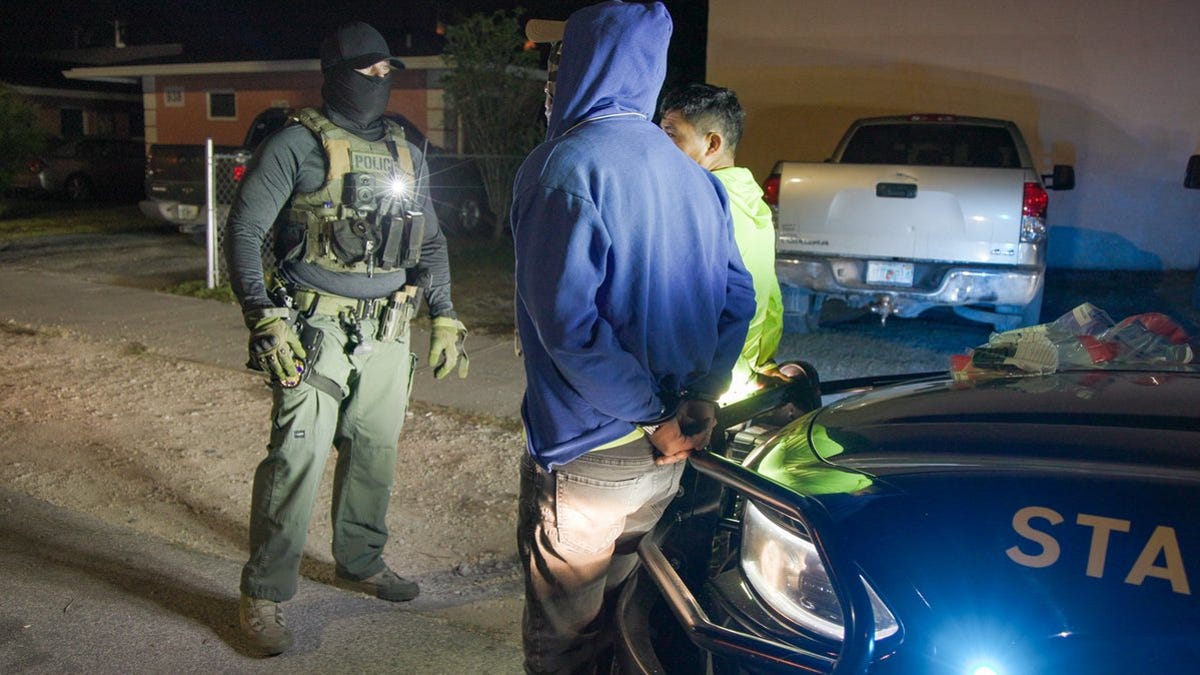A new 37-page document is called the “Florida blueprint” to mass deportation, and will be used across the country, officials say.
House committee grills DHS Sec. Noem on due process, farming
Homeland Security Secretary Kristi Noem faced questions from a House committee on due process and immigration policy impacting agriculture.
- “Operation Tidal Wave,” detained over 1,000 migrants
- The federal government plans to implement a mass deportation approach similar to Operation Tidal Wave within 60 days.
- Florida Governor Ron DeSantis believes other states should follow Florida’s lead in immigration enforcement.
Florida officials called Operation Tidal Wave, where over 1,000 migrants were detained in five days, the “new normal.” And not just for the Sunshine State, but for the rest of the country.
Within the next 60 days, the federal government will attempt to put into practice an approach to mass deportation that’s “strikingly similar” to Operation Tidal Wave, said Larry Keefe, executive director of the State Board of Immigration Enforcement, at a press conference in Tampa May 12.
“The techniques, the methods … will be the standard that our brother and sister states apply in the effort,” he said.
At the lectern, Keefe showed off a 37-page document that he called the “Florida blueprint” to mass deportation. The State of Florida Immigration Enforcement Operations Plan, he said, will be the “prototype.”
“Operation Tidal Wave” was a week-long sting by U.S. Immigrations and Customs Enforcement, Florida law enforcement and the Department of Homeland Security that targeted areas with high-immigrant populations. It led to the arrest of more than 1,100 people, include a man who had no known criminal record and had recently played Jesus in his church’s Easter play.
According to records reviewed by the Miami Herald, authorities aimed to detain 800 people in Miami-Dade and Broward counties and the cities of Tampa, Orlando, Jacksonville, Stuart, Tallahassee and Fort Myers.
On May 9, President Donald Trump issued a proclamation that established “Project Homecoming”: “Either leave the United States voluntarily, with the support and financial assistance of the federal government, or remain and face the consequences,” the proclamation states.
And the proclamation states that, on July 8, the Secretary of Homeland Security “shall supplement existing enforcement and removal operations by deputizing and contracting with State and local law enforcement officers, former federal officers, officers and personnel within other federal agencies, and other individuals to increase the enforcement and removal operations force of the Department of Homeland Security by no less than 20,000 officers in order to conduct an intensive campaign to remove illegal aliens who have failed to depart voluntarily.”
Florida Department of Highway Safety and Motor Vehicles Director Dave Kerner said 1,800 Florida Highway Patrol troopers are credentialed with 287(g) enforcement authority and Florida’s law enforcement already makes up 10% of the 20,000 officers mentioned in the proclamation.
“If you see a state trooper, he or she has federal authority to detain, investigate, apprehend and deport,” Kerner said. The Florida Highway Patrol has assisted or has been the primary arresting agency in over 1,020 immigrants who were in the country illegally, he added.
Gov. Ron DeSantis, also at the Tampa event, said Florida is leading the country but other states need to do more: “There may be a lot of somersaults along the way by some of these guys; there may be some gnashing of teeth for some people in the process, but I imagine we’re going to land basically where we need to land as a state,” he said.
Ana Goñi-Lessan, state watchdog reporter for the USA TODAY Network – Florida, can be reached at [email protected].
